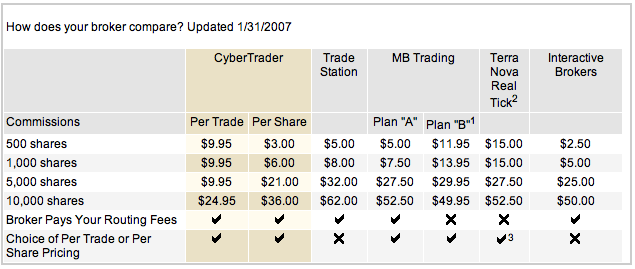John-Paul
Well! Another interesting thread.
Sometimes I think that my trading style is so different from everyone else’s that I don’t know if my inputs help or hurt. However, this is what I do.
Since I have a full time + job I have little time to play with my trades during the day.
First, I try to set my AvgDailyTot so that I have little worry about liquidity, but at the same time I try to trade as low an AvgDailyTot as I can and not have many liquidity problems. So why do I push the edge of having liquidity problems?
If you buy no more than 5% of the AvgDailyTot you will have very little affect on the price. If you trade 10% you will have a little problem every once in a while. So how valuable is trading as low a volume as you can without a problem versus trading a much higher AvgDailyTot so that you won’t have to worry about it?
I ran a test about a year ago testing AvgDailyTot ranges. I tested 3 different Ranking Systems using this set of rules:
10 stock Sims, Buy Rules;
$1 minimum price, 50Mil minimum MktCap, and I ran 6 Sims with the following AvgDailyTot ranges;
AvgDailyTot(20) > 10000 & AvgDailyTot(20) < 500000
AvgDailyTot(20) > 500000 & AvgDailyTot(20) < 1000000
AvgDailyTot(20) > 1000000 & AvgDailyTot(20) < 1500000
AvgDailyTot(20) > 1500000 & AvgDailyTot(20) < 2000000
AvgDailyTot(20) > 2000000 & AvgDailyTot(20) < 2500000
AvgDailyTot(20) > 2500000 & AvgDailyTot(20) < 3000000
I had only 1 sell rule; NoDays > 24
This caused each Sim to buy 530 stocks over a 5 year period selling them after holding them for 1 month.
Using the Flip’s Supper Value Ranking System the results were:
10,000> 500,000; Annual Gain=46, max drawdown = 27.5, avg gain/stock = 3.21%
500,000 > 1,000,000; Annual gain = 48, max drawdown = 34.4, avg gain/stock = 4.34%
1,000,000 > 1,500,000; annual gain = 33, max drawdown = 27.5, avg gain/stock = 2.87%
1,500,000 > 2,000,000; annual gain = 27, max drawdown = 42.3, avg gain/stock = 2.57%
2,000,000 > 2,500,000; annual gain = 11.5, max drawdown = 45.4, avg gain/stock = 1.23%
2,500,000 > 3,000,000; annual gain = 10.0, max drawdown = 55.3, avg gain/stock = 1.15%
So my conclusions are that if you trade less than $1,000,000 AvgDailyTot you can give up 1% extra slippage on every buy and every sell due to liquidity problems and still have a higher gain / stock than if you trade $2,000,000 > $3,000,000 AvgDailyTot.
Therefore, it is worth taking a little risk with less than adequate liquidity.
Oh yes, how do I trade? I check the AvgDailyTot of the last week by looking at the chart. If it looks like I will have a liquidity problem I will break my trade into 2 or 3 trades. I trade 1 in the morning before I go to work, 1 at noon during my lunch break, and 1 about an hour before the market closes during coffee break. All trades are placed with a Market Order, and I take my chances!
Denny 
